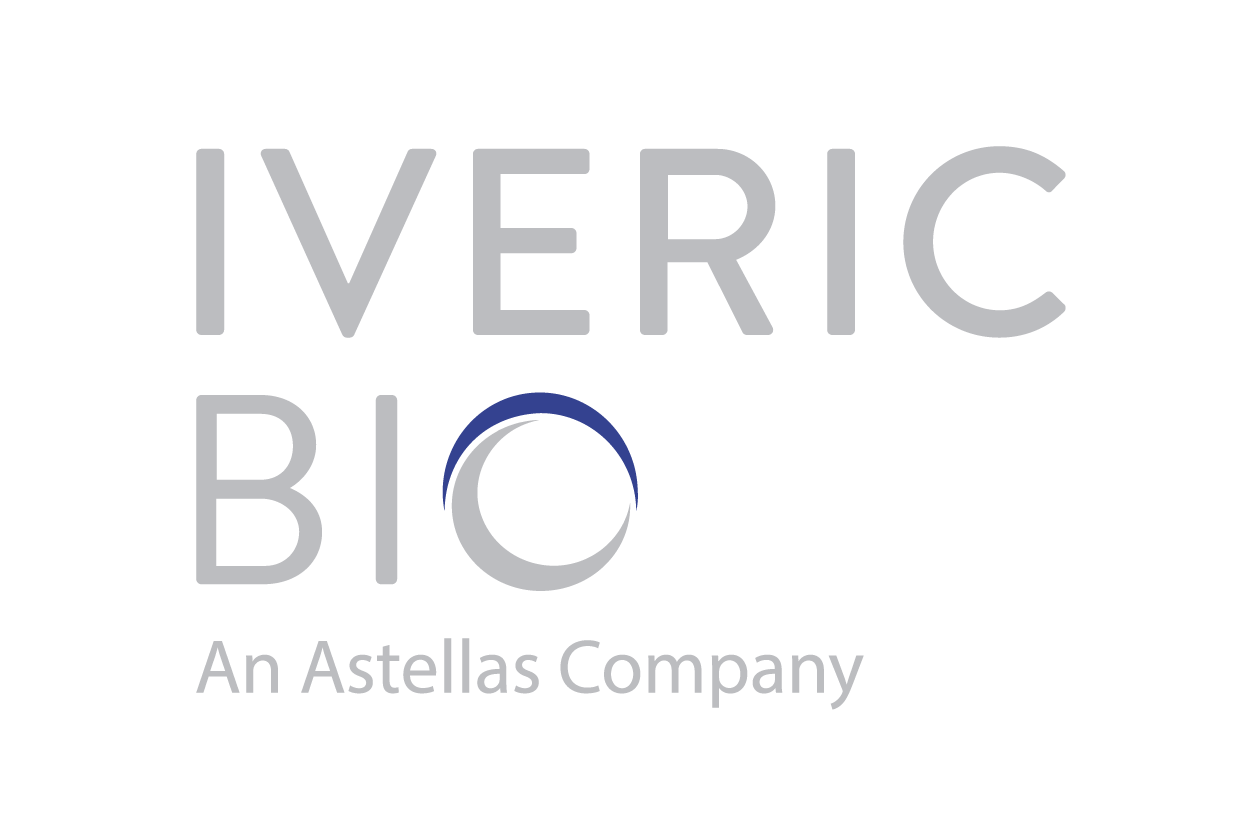Download English Transcript PDF Download Spanish Transcript PDF
MS. DIANA CAMPBELL: Hello. My name is Diana Campbell, and I am pleased to be here with you for today’s Macular Degeneration Chat, “Macular Degeneration Research: Update on Research Funding.” This Chat is brought to you today by BrightFocus Foundation. Macular Degeneration Research is one of our programs at BrightFocus. We fund exceptional scientific research worldwide to defeat Alzheimer’s disease, macular degeneration, and glaucoma, and we provide expert information on these heartbreaking diseases. You can find much more information on our website, www.BrightFocus.org. Now, I’m pleased to introduce today’s guest, Preeti Subramanian, PhD, who will highlight some of the exciting research currently funded by BrightFocus. Dr. Subramanian oversees the Macular Degeneration Research and National Glaucoma Research programs here at BrightFocus. She ensures a high level of scientific accountability within the BrightFocus award program and engages and maintains strong relationships with the scientific community. Before joining BrightFocus, Dr. Subramanian was a research scientist at the National Eye Institute, the NEI, which is part of the NIH, National Institutes of Health, for more than 10 years. Dr. Subramanian has published peer-reviewed articles in prestigious archival journals, including the Journal of Biological Chemistry and Investigative Ophthalmology of Visual Science. Dr. Subramanian, thanks so much for joining us today.
DR. PREETI SUBRAMANIAN: Thank you, Diana, for the kind introduction, and it’s a pleasure to be here today.
MS. DIANA CAMPBELL: Wonderful. I’d like to start with an overview of BrightFocus’ approach for funding research. Can you outline how we review research funding proposals and make decisions about awarding grants?
DR. PREETI SUBRAMANIAN: Yeah. So, in my role at BrightFocus Foundation, I get to read all the applications we receive from scientists worldwide who apply to us with their innovative ideas for macular degeneration. We have a Scientific Review Committee, which is comprised of leading scientists and clinicians in the field, who guide us in identifying the most innovative science that we can fund. We have a 360-degree approach to funding innovative scientific research worldwide, exploring the full range of scientific paths towards better treatments and ultimately for a cure. And today, we will discuss a few research topics that we fund that lays the groundwork for potential future therapy for macular degeneration.
MS. DIANA CAMPBELL: That’s great. What do we know about the origin of macular degeneration, or AMD, as we commonly hear at the doctor’s office? We also hear the term “inflammation” frequently. How does that relate to macular degeneration?
DR. PREETI SUBRAMANIAN: Yeah, that’s a great question to start with. Age-related macular degeneration, or AMD, is a complex and multifactorial disease. And we have yet to fully understand several areas of the condition. One of the areas that is actively being studied is the role of immune systems and inflammation. Our immune system is designed to fight off infections. But as we age, our cells are altered by damage due to oxidative stress, and there is accumulation of debris, which can cause the immune system to attack our own cells. Now, oxidative damage, or oxidative stress, occurs when our bodies produce many reactive molecules that can adversely interact with other molecules within our cells. Now, this results in inflammation, and it can contribute to a number of age-related diseases, such as arthritis, heart disease, Alzheimer’s disease, and also age-related macular degeneration. Now, there’s some evidence in the scientific literature that inflammation plays a role in AMD, including there are genetic studies showing that changes to certain DNA sequences in the complement genes, which are … the complement genes are part of our immune system, and alteration in these genes can significantly alter one’s risk of AMD. Diminishing inflammation and controlling the immune system in the eye could be a helpful therapeutic approach, and the key will be in determining the most effective way to diminish the harmful inflammation without compromising our ability to fight off infection or without causing any unwanted side effects.
MS. DIANA CAMPBELL: By “therapeutic approach,” we’re talking about potential treatments. Do you have examples of some funded studies that slowed down inflammation?
DR. PREETI SUBRAMANIAN: Yes. So, one example is the study we are funding of Dr. Jeremy Lavine. Dr. Lavine’s study will determine how different types of immune cells, like the microglia and the macrophages—these are types of immune cells—how these can influence the formation of new vessels. And he’s looking at this in a model that mimics experimentally wet macular degeneration. And he will be identifying different subtypes of these macrophage immune cells that can either promote or prevent the formation of new vessels. And he will also be identifying other immune cells, like the microglia, what role they have, and how they contribute towards the formation of these new blood vessels.
MS. DIANA CAMPBELL: So, what does that mean for the everyday person? How will this potentially benefit people with AMD?
DR. PREETI SUBRAMANIAN: Sure, so these kinds of studies really help us to develop therapeutics that can target specific immune cells or specific subtypes of immune cells that play critical roles in development of AMD, and so it helps us to come up with a more effective treatment towards wet AMD.
MS. DIANA CAMPBELL: That’s great. And I think you have another example of a study we’re funding, regarding inflammation as the target?
DR. PREETI SUBRAMANIAN: Yes. Another study that I want to give as an example is by Dr. Sayan Ghosh, and his project aims to delineate how the interaction between activated microglia—which is the type of immune cells that I mentioned before—and neutrophils, which are another type of immune cells; how these two interact with each other to develop chronic inflammation, which plays a key role in development of dry macular degeneration. And Dr. Ghosh has some unique models that will mimic these kinds of conditions, and it will help him to shed some light on how these interactions can contribute to dry AMD. And it’s really key to understanding the contributions of these cells for chronic inflammation, and these studies will provide a novel background information on new pathways that are involved in macular degeneration that can be targeted for future drug development for inflammation and degeneration that we see with macular degeneration.
MS. DIANA CAMPBELL: Yes, we’ve definitely seen both current and future treatments for dry AMD in particular, or geographic atrophy, GA, that target inflammation. Are there other new emerging areas of research outside of inflammation?
DR. PREETI SUBRAMANIAN: Yes, one of the really exciting new areas is metabolic dysfunction. It’s emerging as a key mechanism driving many age-related diseases, including AMD. And Dr. Daisy Shu is one of our grantees who’s exploring how metabolic functions and mitochondrial health of the retinal pigment epithelial cells that are present in the eye are impacted during the inflammatory response of AMD. And in a recent study that she published from her BrightFocus-funded project, she found that a drug that’s previously been approved to treat inflammation shows promise in delaying AMD progression. So, this anti-inflammatory drug is already approved for use in other conditions, like multiple sclerosis, and it has been shown to work by decreasing inflammation and preventing nerve damage. So, it’s also approved as a first-line treatment for skin disease, such as psoriasis. So, this is a great example of how an already-proven drug, approved drug, can be used towards treatment for AMD.
MS. DIANA CAMPBELL: That’s really exciting, and that would bring it to patients faster, because the safety has already been tested. That’s wonderful. Can you please talk about other funded research as to how new treatments are identified?
DR. PREETI SUBRAMANIAN: Yes, absolutely. So, disease models is one area that we’ve been funding, and what it is, essentially, is that these models mimic features of macular degeneration in a petri dish, and this can be a game changer, because it allows us to not only study the disease better, but also allows us to screen for potential drugs. And we are funding a number of studies in this area, and in one of the studies that we are funding of Dr. Jennifer Chao, she’s developing and characterizing a three-dimensional flow-directed RPE-choroid scaffold system. In other words, she’s generating a platform, which has different parts of the cells that are involved and have a role in the development of macular degeneration. Now, having such a platform allows scientists to study the key elements or features of macular degeneration, such as extracellular matrix remodeling, the drusen deposition, the vascular flow that has an effect on the choroidal health, the vascular permeability that allows the transfer of metabolites. So, essentially, these are all a day-to-day event that happens in the eye, and any dysfunction in these can contribute towards AMD, and having a model that’s outside of the eye that enables one to study these, that’s an advantage for more understanding of the disease.
MS. DIANA CAMPBELL: So, this is what’s known as disease modeling. Why is this so important to research?
DR. PREETI SUBRAMANIAN: Absolutely. Having a scaffold system or a platform that can recapitulate all the critical elements that I mentioned about AMD will allow for better understanding of the biology of the disease, which scientists are still trying to understand in depth. And it’ll also help us to facilitate drug discovery, or screening, and with drug development. So, it has a lot of advantages for the research community to have something like this.
MS. DIANA CAMPBELL: That makes perfect sense. AMD can progress to advanced forms at different rates among individuals. What research is being done to identify those at risk for AMD?
DR. PREETI SUBRAMANIAN: Yeah, that’s a great question. So, one area that I want to talk about here is artificial intelligence or machine learning. And these systems are rapidly advancing, particularly in ophthalmology. But despite the advancements in artificial intelligence—or AI—there’s still a lot more that needs to be done to make it more personalized to identify in the progression. And one of our grantees, Dr. Joelle Hallak, is developing algorithms that predict the probability of AMD progression, and she’s doing this by integrating eye images, along with the genetic information and clinical data, into a predictive model. So, it’s an integrative approach that can help develop tools that will predict the chance of AMD progression in a more personalized patient-by-patient basis. And this is key for AMD, since, as you mentioned, it advances at different rates among individuals, so a personalized approach like this will be very valuable.
MS. DIANA CAMPBELL: It definitely sounds very comprehensive. Can you tell us a little bit more?
DR. PREETI SUBRAMANIAN: Yeah. So, Dr. Hallak and the team … their work will improve the identification of high-risk patients as candidates for more frequent screening and earlier treatment, and this can lead to better clinical outcomes, and having this knowledge will also empower patients who are at high risk to make necessary lifestyle changes that can reduce one’s risk by making changes such as incorporating a diet that’s rich in omega 3 and leafy greens that have been shown to be beneficial in macular degeneration. And I also want to talk about another project that we fund. It’s the grant to Dr. Leah VandenBosch. She aims to develop models that can accurately predict the potential impact of noncoding DNA sequences. Now, these are regions of DNA that have not been shown to have any function. And the new studies that are pointing towards these regions play a functional role in disease. So, the models generated by Dr. VandenBosch will be useful in identifying these noncoding variants that may contribute to macular degeneration, and this is an area that’s been hugely understudied. So, a lot of key, important discoveries can come here. And so, as a result, what one can do is AMD-associated variants can be prioritized for functional follow-up and can be prediction scores that can be benchmarked by doctors for future use in genetic testing. And having this information on these variants of noncoding regions could allow for new treatments to become more quickly available.
MS. DIANA CAMPBELL: We’ve heard a lot about lifestyle modifications for AMD. Are we funding research related to those modifications that we can all make in our day-to-day life?
DR. PREETI SUBRAMANIAN: Yeah, absolutely. There is strong evidence that a diet that incorporates fruit and vegetables and healthy, fatty fish—such as salmon—can protect against AMD. And in contrast, diets high in red meat, sugar, or simple carbohydrates and the types of fat found in processed food can increase one’s risk of AMD. One reason that scientists think that protective foods may provide benefit or may be anti-inflammatory is because these foods can change the composition of the gut microbiome. Now, the microbiomes in the gut are the naturally occurring bacteria, and BrightFocus has supported several studies that point to a protective association between certain profiles of the gut microbiome and that AMD in the … and for AMD, in the long term, this could lead to easily implementable, low-cost intervention that targets modification of the gut microbiome, either by diet, or we could identify potential pathways that can be targeted for intervention to prevent AMD. And Dr. Amy Millen and her team are examining and comparing the composition and diversity of the gut microbiome in postmenopausal women with and without AMD. So, this innovative project … like this can help us expand our understanding of nutrition in macular degeneration as mediated through the gut microbiome. Now, the gut microbiome can also influence and modify the body’s immune responses and may be of relevance to AMD, given that the immune system has such a strong link to the development of AMD. And one of our other grantees, Dr. Hammond, is exploring the role of gut microbiome in AMD to understand the influence on the immune system, and this will help us to better understand the disease for the development of some new therapies for AMD.
MS. DIANA CAMPBELL: That’s really interesting that small changes to make in our day-to-day life could really become critical to halting AMD or slowing the progression. That’s wonderful. So, transitioning to a more futuristic area, what is gene editing?
DR. PREETI SUBRAMANIAN: Current treatments for wet AMD rely on frequent injections in the eye. This can be expensive and also a burden for patients to keep up with the frequent appointments for injections. So, we’re funding grants that are developing a potential cure for wet AMD using a powerful gene-editing technology called CRISPR. Now, CRISPR stands for clustered regularly interspaced short palindromic repeats. So, these are short DNA sequences that are part of the defense mechanism in bacteria. And scientists have been able to leverage this as a very powerful gene-editing technology. And this can permanently change the genes that cause wet AMD, and hopefully someday it can be available as a therapeutic. We’re funding Dr. Glenn Yiu, who is developing a safe and effective approach to deliver these CRISPR editing enzymes into the eye that will help to stop the growth of the abnormal blood vessels that’s seen in wet AMD. And he’s doing these in models of AMD, and hopefully we can have a similar approach that can be translated to humans to suppress these abnormal vessels. And another study is that of Dr. Shusheng Wang, who’s also establishing a novel inducible system for blocking the VEGF, which is … so it can be turned on and turned off on a need-by-need basis in a way. And this system combines the potency, the reversibility, the safety, and it has the potential to treat AMD with just one ocular injection. So, these are some exciting gene editing studies that we are funding in our portfolio.
MS. DIANA CAMPBELL: Wow, that’s really, really very interesting. There could potentially even be a cure, but a once-a-year treatment would be life changing for so many people. That’s very exciting. I have one question, Dr. Subramanian. Are there any studies being done that correlate dry AMD with Alzheimer’s? Do they show the same proteins?
DR. PREETI SUBRAMANIAN: There are some studies that looked at that, but the correlation is not that strong between AMD and Alzheimer’s. But there have been some plaques that have been seen early on in the eye. We need more studies that can establish a link between these plaques in the eye with AMD.
MS. DIANA CAMPBELL: Sure, that makes sense. Well, that concludes our discussion for today. I sincerely hope you found today’s Chat helpful. Dr. Subramanian, before we conclude, are there any final remarks you’d like to share with the audience?
DR. PREETI SUBRAMANIAN: Sure. I want to say that basic and clinical research that’s in numerous areas have been critical in our understanding and development … understanding of development of this disease and have helped in making advances towards treatment. And we at BrightFocus continue to support the development of new techniques for disease monitoring and treatment and funding innovative science that can potentially lead to groundbreaking discoveries in both management and future treatment of this condition. Thank you.
MS. DIANA CAMPBELL: Thanks so much, Dr. Subramanian. Thank you for your time and for sharing all of the exciting updates that you have regarding our research funding. This concludes the BrightFocus Chat.









